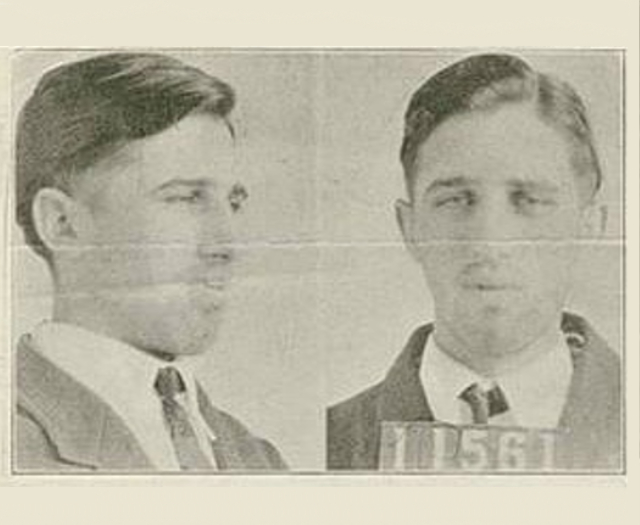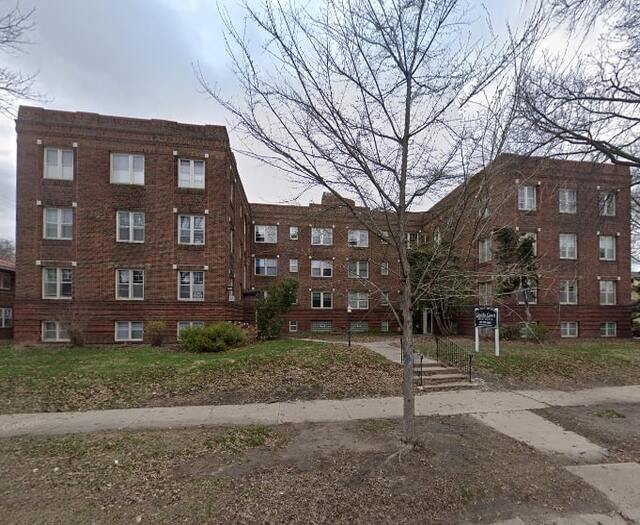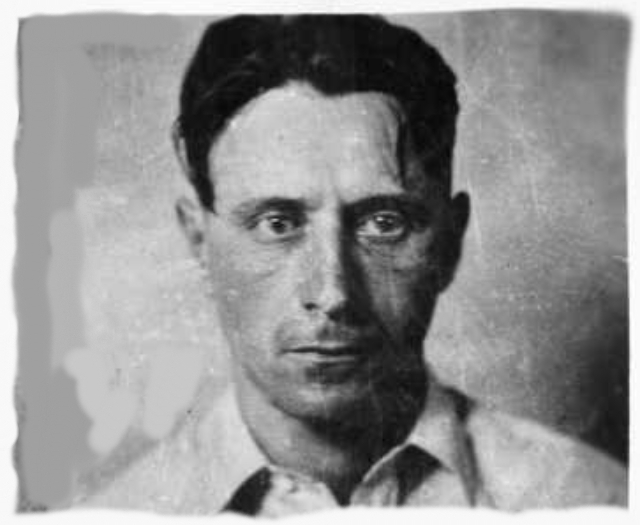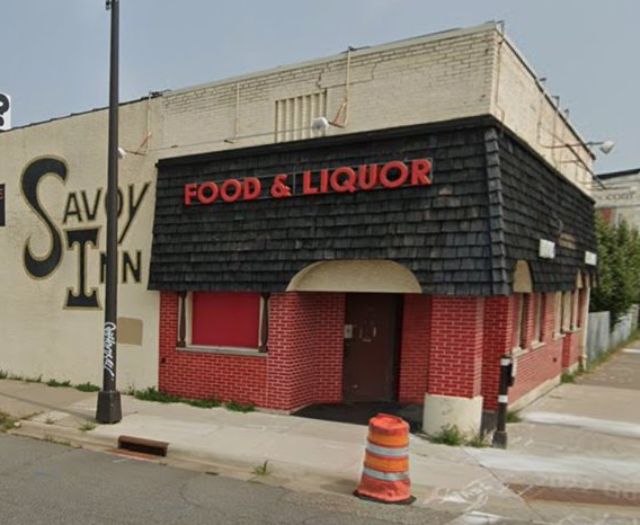Van Meter, Homer V. (1905 - 1934)

On August 23, 1934, a deadly gunfight between police and Depression-era gangster Homer Van Meter, a former lieutenant in Dillinger's gang, erupted near here. The final moments of his life played out just south of University Ave. and Marion St., ending with his death in a dead-end alley.
Around 4:30 pm, Van Meter entered the Saint Paul Auto Company on University Avenue. He intended to buy a car and flee the area ahead of closing-in authorities. At around 5 PM, he encountered four armed officers while leaving the dealership, including Chief Cullen, Detective Brown, and two others.
The officers waited in a car near the intersection until Van Meter walked by. As he did, Brown and Cullen emerged, ordering him to stop. Van Meter immediately drew his pistol, spun, and fired, narrowly missing Brown twice. He sprinted across University, heading south on Marion, only to be chased by a hail of gunfire from the officers. Briefly halting when a woman entered the line of fire. After ensuring her safety, they resumed shooting.
Discrepancies in eyewitness accounts fueled debate over what happened next. While Van Meter’s end is undisputed, the moments before have been called into question.
According to official reports, Cullen and Brown chased the fugitive into a dead-end alley, firing at him. Van Meter dropped to the ground. By the time they reached him, he was dead, pistol still in hand.
Eyewitness Mrs. Andrew Stedje, standing on the southeast corner of University and Marion, told another story. Shortly after hearing two shots, she saw a hat-holding Van Meter sprint down Marion toward the alley, with Brown and Cullen chasing. Concerned for her nearby children, she followed.
She saw the officers immediately open fire upon reaching the alley. A bullet-ridden Van Meter soon crumpled, his held hat rolling away. The men walked up and fired several more shots into his prone body. Papers later reported Van Meter suffered up to fifty gunshot wounds.
Officers picked the straw hat up off the ground and placed it over the mortally wounded man's face. They reportedly found just over $1400 on the body. Those familiar with Van Meter scoffed at the official amount. They believed he carried significantly more - estimates ranged from $9,000 to $18,000. Not the amount police recovered. Leaving town, he'd have needed ample funds to start over.
In the days after the shooting, multiple witnesses stated Van Meter never pointed a gun at anyone. They reported the gangster held his hat in one hand and that the other one may have been empty. The only guns they reported seeing were those held by the police.
Van Meter was probably set up - but by whom? The official report claimed a dealership employee or love interest's relative had tipped the police. However, evidence suggests a coordinated effort between law enforcement and local criminals engineered his death. The outspoken Van Meter had lingered too long, and the underworld grew tired of him.
One theory was that Hollyhocks Casino owner Jack Peifer, acting with gangsters Tommy Gannon and Harry Sawyer, contacted Detective Brown the morning of the 23rd after meeting with Van Meter. Peifer may have been holding on to some of Van Meter's money and didn't want to return it.
In the weeks after the shooting, Brown embarked on a redemption tour, spinning his version of events to eager journalists—a PR resuscitation of the disgraced former Police Chief's reputation. But Brown's shady ties to the Barker-Karpis gang led some to believe he may have wanted to silence Van Meter to bury evidence of their shared wrongdoings.
Despite Brown’s best efforts, those crimes eventually caught up to him. He was fired for the role authorities believed he played in the Hamm Jr. and Bremer kidnappings. They couldn't prove his involvement, so the former lawman was never arrested — but his law enforcement career was over.
When Van Meter's body was returned to his family, they were disgusted by the extreme police response, believing officers had used it for target practice. After a private funeral, he was buried at Lindenwood Cemetery in Fort Wayne, Indiana.
Van Meter's death sent a message that the tide was turning in the fight against gangsters. However, discrepancies between witness testimonies and the official narrative raised questions. Was he killed in self-defense or executed? Whatever the truth, the gangster's life ended with a flurry of bullets in a St. Paul alley.
This work is licensed under Creative Commons BY-NC 4.0.
Bibliography
-
"John Dillinger." Murderpedia, the Encyclopedia of Murderers. LINK.
-
"A Cop-Killer's Last Run." American Handgunner, December 9, 2018. LINK.
-
"Homer Virgil Van Meter (1905-1934) - Find A Grave..." Find A Grave - Millions of Cemetery Records. LINK.
-
"Infamous Burials in Allen County, Indiana on Allen INGenWeb Project." Allen County Genealogical Society of Indiana, July 24, 2023. LINK.
-
John Dillinger Slept Here: A Crooks' Tour of Crime and Corruption in St. Paul, 1920-1936. Minnesota, 1995.
-
The Mammoth Book of Gangs. C & R Crime, 2012.
-
"Van Meter's Death Closely Patterned After Chieftain's." The Bismarck Tribune, August 24, 1934, 1.
 Minnesota Then
Minnesota Then


